Mastering Aerial Shots: Tools and Tips for Drone Videography
Are you struggling to capture stunning aerial footage with your drone? This guide will equip you with essential tools and professional tips to elevate your drone videography. We’ll cover selecting the right drone, mastering flight skills, and techniques for cinematic shots. You’ll learn how to use high dynamic range to enhance exposure, choose the best lens for your needs, and edit your video clips for maximum impact. By the end, you’ll have the knowledge to create attention-grabbing aerial videos that stand out from the crowd.
Key Takeaways
- Choose drones with suitable camera capabilities and flight stability for optimal videography results
- Master essential flight skills and understand regulations to ensure safe and legal drone operations
- Apply composition techniques and utilize natural light to capture cinematic aerial footage
- Organize footage efficiently and use post-production tools to enhance the final product
- Conduct thorough pre-flight checks and consider insurance options to protect equipment and operations
Selecting the Ideal Drone for Your Videography Needs
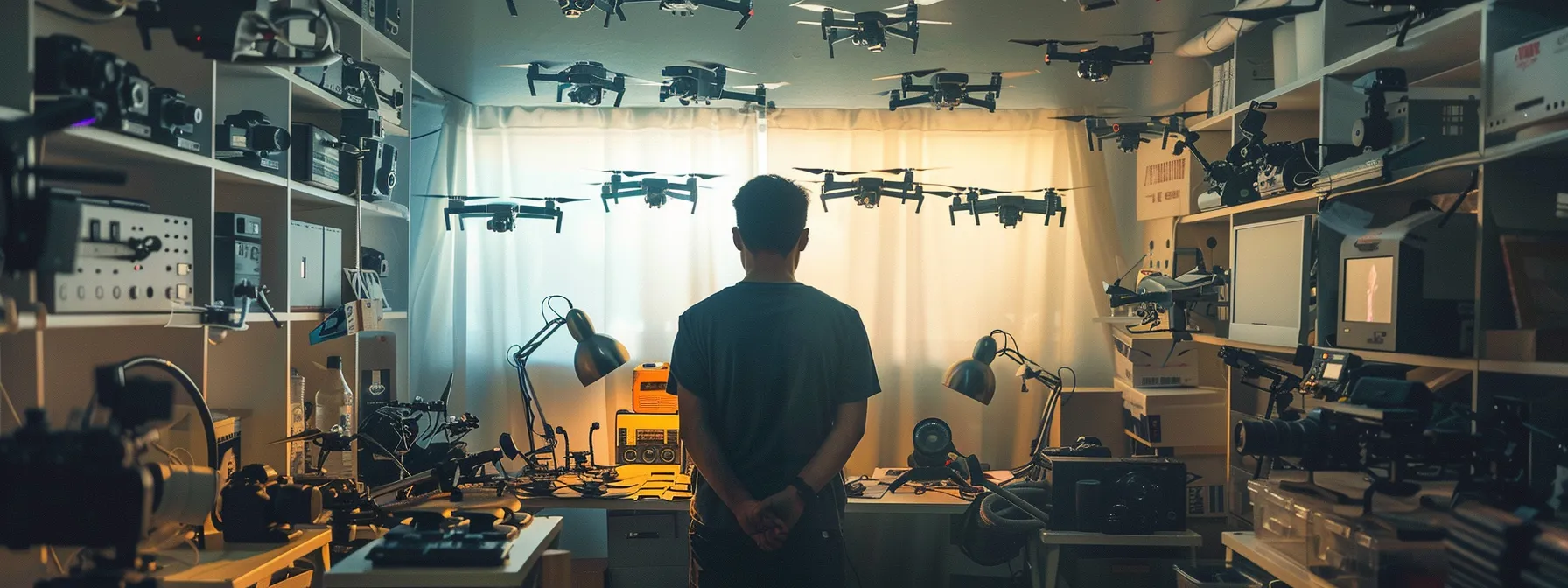
Choosing the right drone for videography involves evaluating camera capabilities, flight stability, and drone categories. Photographers must balance budget with performance, considering factors like sky conditions, camera lens quality, and sunlight exposure. Understanding features such as dolly zoom and rotation helps capture stunning aerial footage. This section explores key aspects of drone selection for optimal videography results.
Comparing Camera Capabilities for Quality Footage
Camera capabilities play a crucial role in capturing high-quality drone footage. Professional videographers evaluate sensor size, resolution, and frame rates to ensure optimal performance in various lighting conditions. Advanced features like adjustable aperture and ISO settings allow for greater control over exposure, particularly useful when filming in challenging environments or for marketing purposes. Some drones offer built-in ND filters or the ability to add external filters, which prove invaluable for managing shutter speed and maintaining smooth motion in bright sunlight, a key consideration for live streaming and fast-paced shots.
Assessing Flight Stability and Control Features
Flight stability and control features significantly impact the quality of aerial photography and video production. Advanced drones equipped with GPS positioning, gimbal technology, and obstacle avoidance systems enable smooth, steady footage even in challenging conditions. These features allow videographers to capture emotion-evoking shots with precision, whether filming landscapes in the United States or intricate subjects that require 4K resolution. Professional-grade drones often incorporate intelligent flight modes, such as waypoint navigation and automated tracking, which enhance control and expand creative possibilities for aerial cinematography.
Understanding Different Drone Categories and Uses
Drone categories for videography range from compact, consumer-grade models to professional cinematography drones. Consumer drones like the DJI Mavic series offer portability and ease of use, ideal for capturing dramatic landscape shots. Professional models, such as those used with Lumix or Sony cameras, provide superior image quality and advanced flight controls, perfect for high-end productions. Specialized drones designed for bird photography or wildlife documentaries feature long-range capabilities and quiet operation to minimize disturbance to subjects.
Balancing Budget With Performance Requirements
Balancing budget with performance requirements involves careful consideration of essential features for drone videography. While high-end drones offer advanced capabilities like superior autofocus systems and wider dynamic range for capturing stunning sunrise shots, mid-range options can still produce professional-quality footage with skilled editing and thoughtful angle selection. Videographers must evaluate their specific needs, such as the ability to shoot from unique perspectives or in challenging lighting conditions, to determine where to allocate their budget for maximum impact on their final product.
Essential Equipment and Accessories for Drone Filmmaking
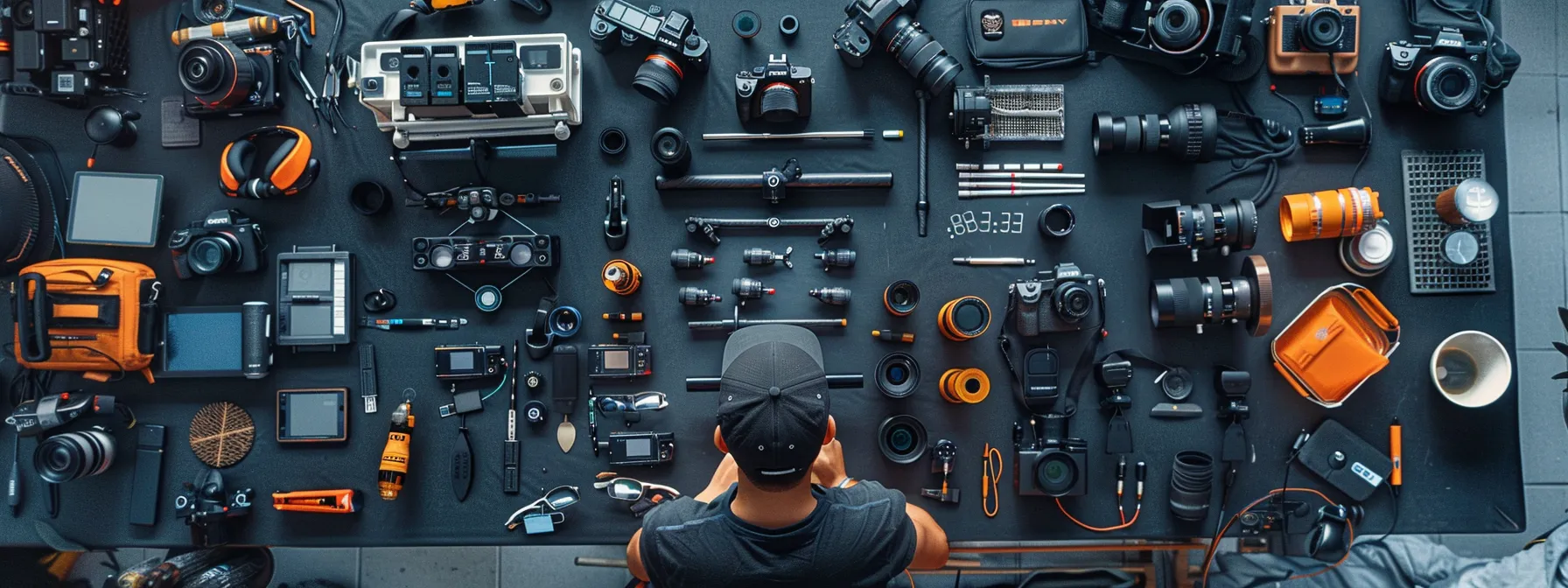
Successful drone filmmaking requires essential equipment and accessories. This section covers the importance of spare batteries and propellers, utilizing filters for image clarity, reliable storage solutions, and advanced remote controllers. From DJI drones to Panasonic cameras, these tools enhance content creation and enable manual focus techniques, elevating drone videography for professionals and enthusiasts alike.
Importance of Spare Batteries and Propellers
Spare batteries and propellers are crucial for uninterrupted drone videography sessions. Experienced operators carry multiple batteries to extend flight time, ensuring they capture slow motion sequences and eye-catching aerial shots without interruption. Propellers, susceptible to damage during flights or landings, require backups to prevent delays in information gathering or project completion. Drone pilots often keep a joystick-operated charging hub nearby, allowing for quick battery swaps and efficient workflow management. The following list outlines essential spare equipment for drone filmmaking:
- Multiple fully charged batteries
- Extra sets of propellers
- Portable charging hub
- Propeller guards for protection
- Battery storage case
Utilizing Filters to Improve Image Clarity
Filters play a crucial role in enhancing image clarity and controlling exposure in drone videography. Neutral Density (ND) filters, in particular, allow operators to maintain optimal aperture settings while capturing smooth, cinematic motion, especially during panning shots or when filming sunsets. These filters effectively reduce the amount of light reaching the drone’s sensor, enabling longer exposure times and creating a more professional look reminiscent of helicopter-style aerial footage.
Choosing Reliable Storage Solutions for Video Files
Reliable storage solutions are essential for drone videographers to safeguard their high-quality footage. Professional operators often use rugged, high-capacity SSDs or portable hard drives to store their video files securely while on location. These storage devices protect against data loss from unexpected gear malfunctions or environmental factors during flights. Videographers must consider factors such as read/write speeds, durability, and compatibility with their editing software when selecting storage solutions to ensure smooth workflow from capture to post-production, minimizing noise in their workflow and allowing them to focus on capturing stunning horizon shots with optimal shutter settings.
Enhancing Control With Advanced Remote Controllers
Advanced remote controllers enhance drone videography by offering precise control and expanded functionality. These tools enable videographers to capture stunning landscapes and create professional-quality vlogs with ease. Features like built-in monitors, customizable buttons, and advanced telemetry provide real-time information crucial for color grading and composition. Some controllers even integrate with tripods, allowing for stable ground-based control during complex aerial maneuvers. The following list outlines key benefits of advanced remote controllers:
- Improved precision for intricate shots
- Real-time video transmission for immediate feedback
- Customizable controls for efficient workflow
- Extended range for capturing distant subjects
- Integration with other tools for versatile setups
Developing Proficient Flight Skills for Better Shots
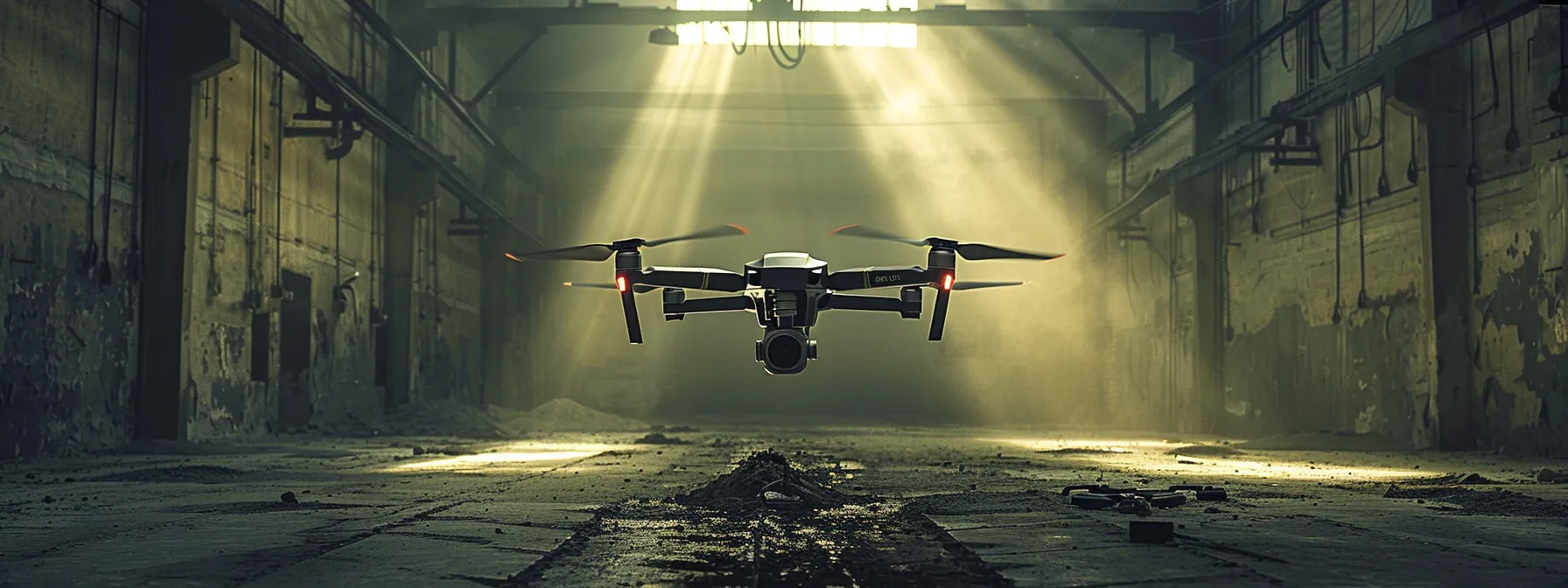
Developing proficient flight skills is crucial for capturing exceptional drone footage. This section covers basic maneuvers, advanced flight modes, safe altitude maintenance, and error prevention. Videographers must master software controls, optimize memory card usage, and understand Federal Aviation Administration regulations. Mastering these skills enables smooth moves and cinematic shots, elevating drone videography to professional standards.
Practicing Basic Maneuvers and Controls
Mastering basic maneuvers and controls forms the foundation of skilled drone videography. Operators should practice essential movements like the orbit, where the aircraft circles a subject while maintaining focus, to create dynamic compositions. Proficiency with the drone’s computer interface enables smooth adjustments to camera settings, optimizing light exposure for various conditions. Regular practice in diverse environments helps pilots develop the muscle memory and spatial awareness necessary for capturing compelling aerial footage.
Exploring Advanced Flight Modes and Functions
Advanced flight modes enhance drone videography by automating complex maneuvers and allowing pilots to focus on composition. These modes, such as waypoint navigation and tracking, enable precise control over height and camera movements, creating dynamic shots with varying depth of field. Proficient pilots utilize these functions to capture stunning aerial footage for exams or brand promotions, optimizing their SD card usage by efficiently planning and executing shots.
Maintaining Safe Altitudes and Distances
Maintaining safe altitudes and distances is crucial for drone videographers to ensure compliance with airspace regulations and capture high-quality images. Pilots must possess thorough knowledge of local laws and use their drone’s built-in altimeter to stay within legal limits. By carefully monitoring altitude and distance from the operator, videographers can maximize their camcorder’s capabilities while avoiding potential conflicts with other aircraft. This practice not only ensures safety but also allows for better image composition and smoother post-production editing in software like Adobe Premiere Pro.
Tips to Prevent Common Flying Errors
Preventing common flying errors is crucial for capturing high-quality drone footage. Experienced pilots recommend thorough pre-flight checks of camera settings and equipment to avoid mid-air adjustments. They also emphasize the importance of practicing in open areas to gain confidence in controlling the drone’s movements. By following these tips, videographers can minimize errors and focus on creating compelling streaming media content:
- Conduct comprehensive pre-flight checks
- Practice in open areas to build confidence
- Monitor battery levels consistently
- Stay aware of surrounding obstacles
- Use flight modes appropriate for the shot
Techniques for Capturing Cinematic Aerial Footage
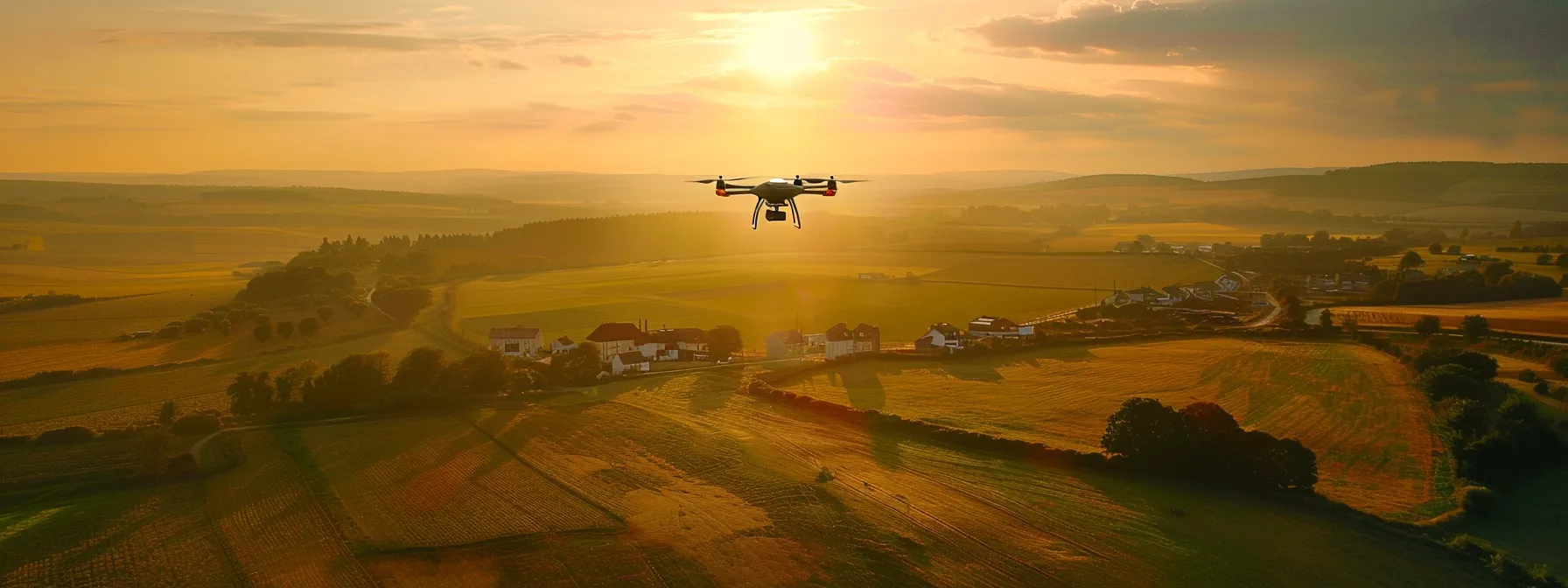
Capturing cinematic aerial footage requires mastery of composition, lighting, and movement techniques. This section explores principles of framing, maximizing natural light, executing dynamic movements like pans and orbits, and conveying stories through aerial perspectives. Videographers will learn to enhance storytelling, utilize tracking shots, optimize image stabilization, and adjust frame rates for professional-quality drone footage.
Principles of Aerial Composition and Framing
Effective aerial composition and framing enhance the cinematic quality of drone footage. Videographers utilize the rule of thirds, leading lines, and symmetry to create visually appealing shots with maximum dynamic range. During golden hour, operators exploit natural light to capture stunning landscapes, optimizing motion and depth. Budget-conscious filmmakers can achieve professional results by mastering these principles, even with entry-level equipment.
Maximizing Natural Light in Your Shots
Maximizing natural light is crucial for capturing stunning aerial footage with a drone’s mirrorless camera. Videographers adjust altitude and camera settings to optimize color and exposure, considering factors like time of day and weather conditions. By strategically positioning the drone relative to the sun, operators can create dramatic shadows and highlights, enhancing the visual impact of their shots without propeller interference:
Executing Dynamic Movements Like Pans and Orbits
Executing dynamic movements like pans and orbits requires skill and precision to capture cinematic aerial footage. Videographers utilize mobile apps to control shutter speed and fill light, ensuring smooth motion and optimal exposure. Advanced drones equipped with active track technology enable operators to focus on composition while the aircraft maintains a consistent orbit around the subject, creating visually stunning sequences that enhance storytelling and viewer engagement.
Conveying Stories Through Aerial Perspectives
Aerial perspectives offer unique opportunities to convey stories through drone videography. Videographers use DJI Mavic drones to capture sweeping landscapes, revealing hidden connections and patterns that ground-level shots miss. By incorporating music and carefully timed movements, operators create emotional narratives that engage viewers on a deeper level. Learning to balance wide shots with intimate close-ups allows photographers to craft compelling visual stories that showcase both scale and detail, enhancing the overall impact of their work:
Enhancing Videos With Effective Post-Production
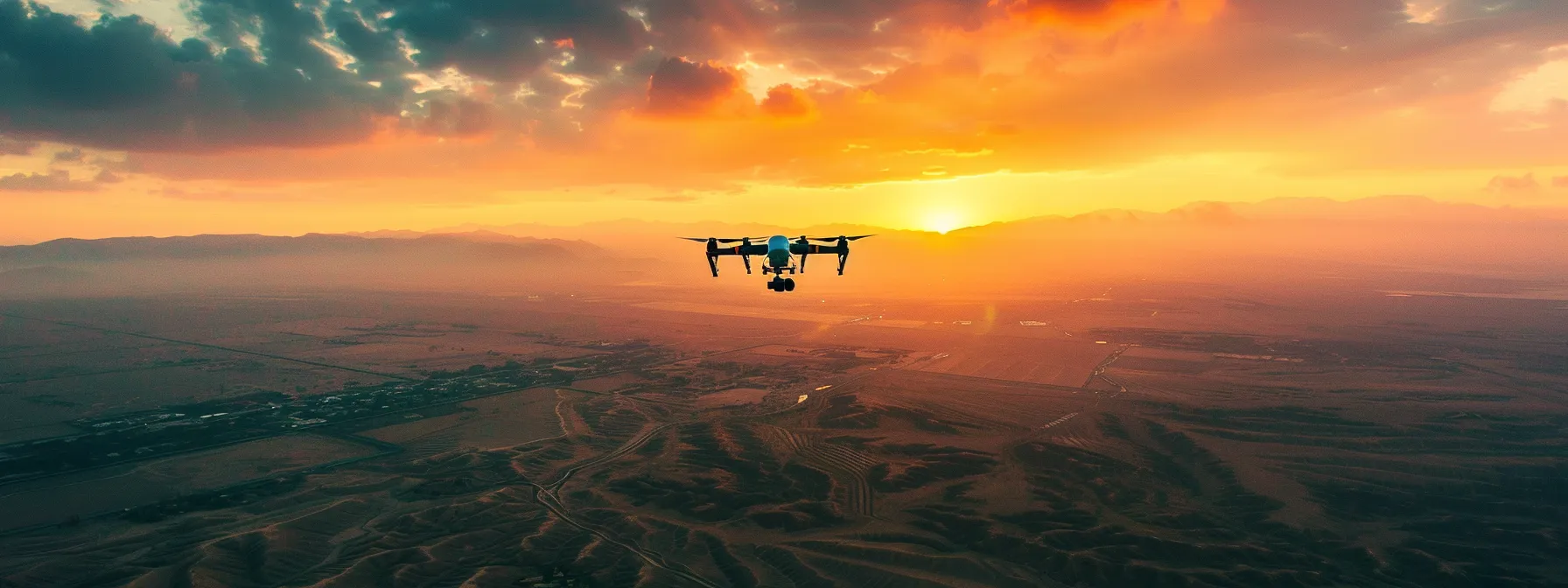
Effective post-production elevates drone videography from raw footage to polished films. This section covers organizing footage for efficient editing, applying color correction and grading, stabilizing shaky clips, and incorporating audio elements. Mastering these techniques, along with understanding the rule of thirds and bracketing, enhances filmmaking quality. Video editing software and technology play crucial roles in refining aerial shots and creating impactful visual narratives.
Organizing Footage for Efficient Editing
Efficient footage organization streamlines the post-production process for drone videographers. By categorizing clips based on shot type, location, and lighting conditions, editors can quickly locate the perfect shadow play or gimbal-stabilized sequence for their project. Implementing a consistent naming convention and utilizing metadata tags enables seamless navigation through hours of aerial footage, saving valuable time during the editing phase. This systematic approach allows videographers to focus on the artistic aspects of their craft, ensuring they have the right shots to create compelling visual narratives without violating any license agreements.
Applying Color Correction and Grading
Color correction and grading transform raw drone footage into cinematic masterpieces. Videographers use advanced software like Final Cut Pro to adjust white balance, exposure, and contrast, ensuring consistency across shots captured in varying lighting conditions. By applying custom LUTs (Look-Up Tables) and fine-tuning color curves, editors can create a distinct visual style that enhances the mood of aerial cinematography. Cloud-based collaboration tools enable teams to share and review color-graded footage, streamlining the post-production workflow and ensuring the final product aligns with the project’s creative vision.
Stabilizing and Refining Shaky Clips
Stabilizing and refining shaky clips is crucial for professional-quality drone videography. Editors use advanced software like Premiere Pro to smooth out footage affected by wind or digital camera vibrations. They apply warp stabilizer effects and adjust motion tracking settings to eliminate unwanted movement, ensuring the final product aligns with the original storyboard. Experienced videographers often create a checklist of stabilization techniques, including trimming clip edges and adjusting playback speed, to efficiently process multiple shots and maintain visual consistency throughout their projects.
Incorporating Audio Elements for Impact
Incorporating audio elements significantly enhances the impact of drone videography. Video editing software allows operators to synchronize high-quality soundtracks with aerial footage captured by phantom drones, creating a more immersive viewing experience. Professional videographers often layer ambient sounds, such as wind or wildlife noises, to add depth and authenticity to their aerial shots. By carefully balancing these audio elements with the visual content, editors can evoke specific emotions and guide the viewer’s attention, elevating the overall quality of their drone footage.
Navigating Regulations and Ensuring Safe Operations
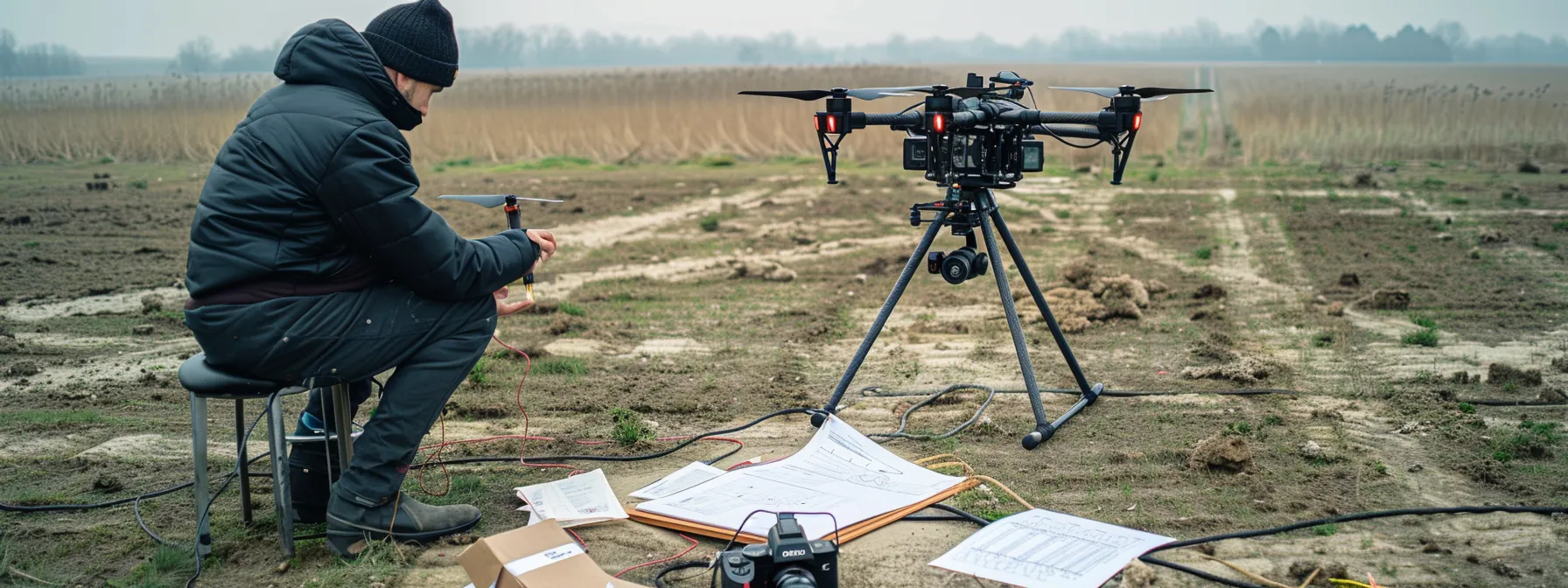
Navigating regulations and ensuring safe operations are crucial aspects of drone videography. This section covers essential topics including drone flight laws, pre-flight checks, privacy considerations, and insurance options for pilots. Understanding these elements helps drone operators maintain legal compliance, safeguard equipment, and protect themselves from liability while capturing stunning aerial footage.
Familiarizing Yourself With Drone Flight Laws
Drone operators must familiarize themselves with local and federal flight laws to ensure legal compliance. The Federal Aviation Administration (FAA) regulates drone usage in the United States, requiring registration for certain unmanned aircraft and adherence to specific guidelines. Videographers should consult the FAA’s website for up-to-date information on airspace restrictions, altitude limits, and certification requirements. Understanding these regulations is crucial for safe and lawful drone operations:
Conducting Comprehensive Pre-Flight Checks
Comprehensive pre-flight checks are essential for safe drone operations and high-quality videography. Operators should inspect their equipment, including propellers, batteries, and camera mounts, before each flight. They must also verify weather conditions, check for airspace restrictions, and ensure their drone’s firmware is up-to-date. A thorough pre-flight routine helps prevent equipment failures and legal issues, allowing videographers to focus on capturing stunning aerial footage:
- Inspect drone body and propellers for damage
- Check battery charge levels and secure connections
- Calibrate compass and GPS systems
- Verify camera settings and memory card capacity
- Review local weather forecasts and airspace regulations
Respecting Privacy and Property Boundaries
Respecting privacy and property boundaries is crucial for drone videographers to maintain legal and ethical operations. Operators must obtain permission before flying over private property and avoid capturing footage that infringes on individuals’ privacy rights. Videographers should familiarize themselves with local laws regarding drone use in residential areas and public spaces, ensuring their aerial footage complies with regulations and respects community standards. Adhering to these principles helps maintain positive relationships with the public and prevents potential legal issues:
- Research local privacy laws and regulations
- Obtain written permission for flights over private property
- Avoid capturing identifiable individuals without consent
- Respect no-fly zones and restricted areas
- Use discretion when filming in residential neighborhoods
Understanding Insurance Options for Pilots
Drone pilots should consider various insurance options to protect themselves and their equipment during videography operations. Liability insurance covers potential damages or injuries caused by drone flights, while equipment insurance safeguards against theft, damage, or loss of the drone and associated gear. Some insurance providers offer specialized policies tailored for commercial drone operators, which may include coverage for cyber risks and privacy violations. Pilots should carefully review policy terms and coverage limits to ensure adequate protection for their specific videography needs.
Conclusion
Mastering drone videography requires a blend of technical expertise, creative vision, and regulatory compliance. From selecting the ideal drone and essential equipment to developing proficient flight skills and capturing cinematic aerial footage, each aspect plays a crucial role in producing high-quality content. Effective post-production techniques further elevate the final product, transforming raw footage into polished films that captivate audiences. By navigating regulations, ensuring safe operations, and continuously refining their craft, videographers can unlock the full potential of drone technology to create stunning visual narratives that stand out in the competitive world of aerial cinematography. For expert guidance and resources, Contact Us today!
